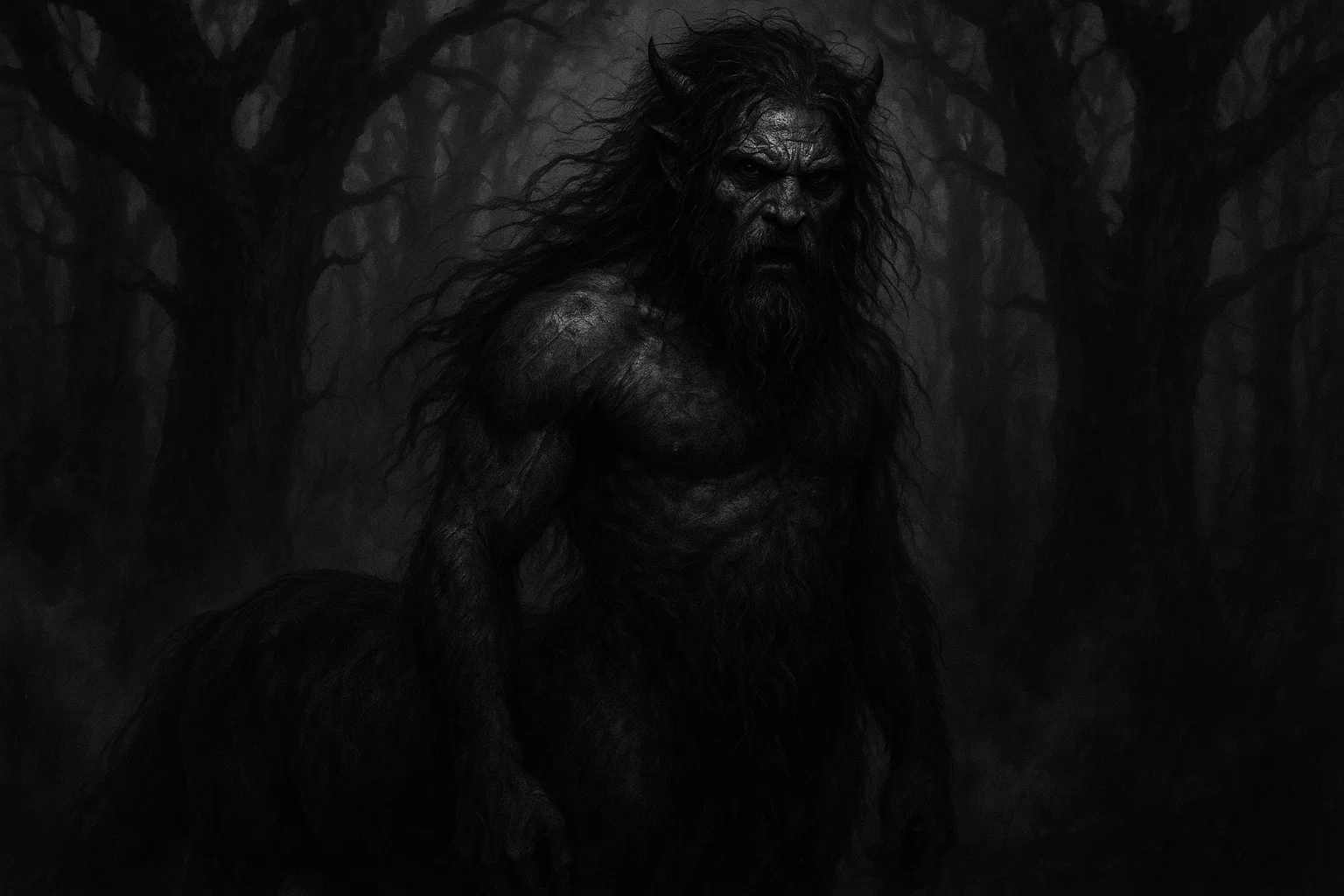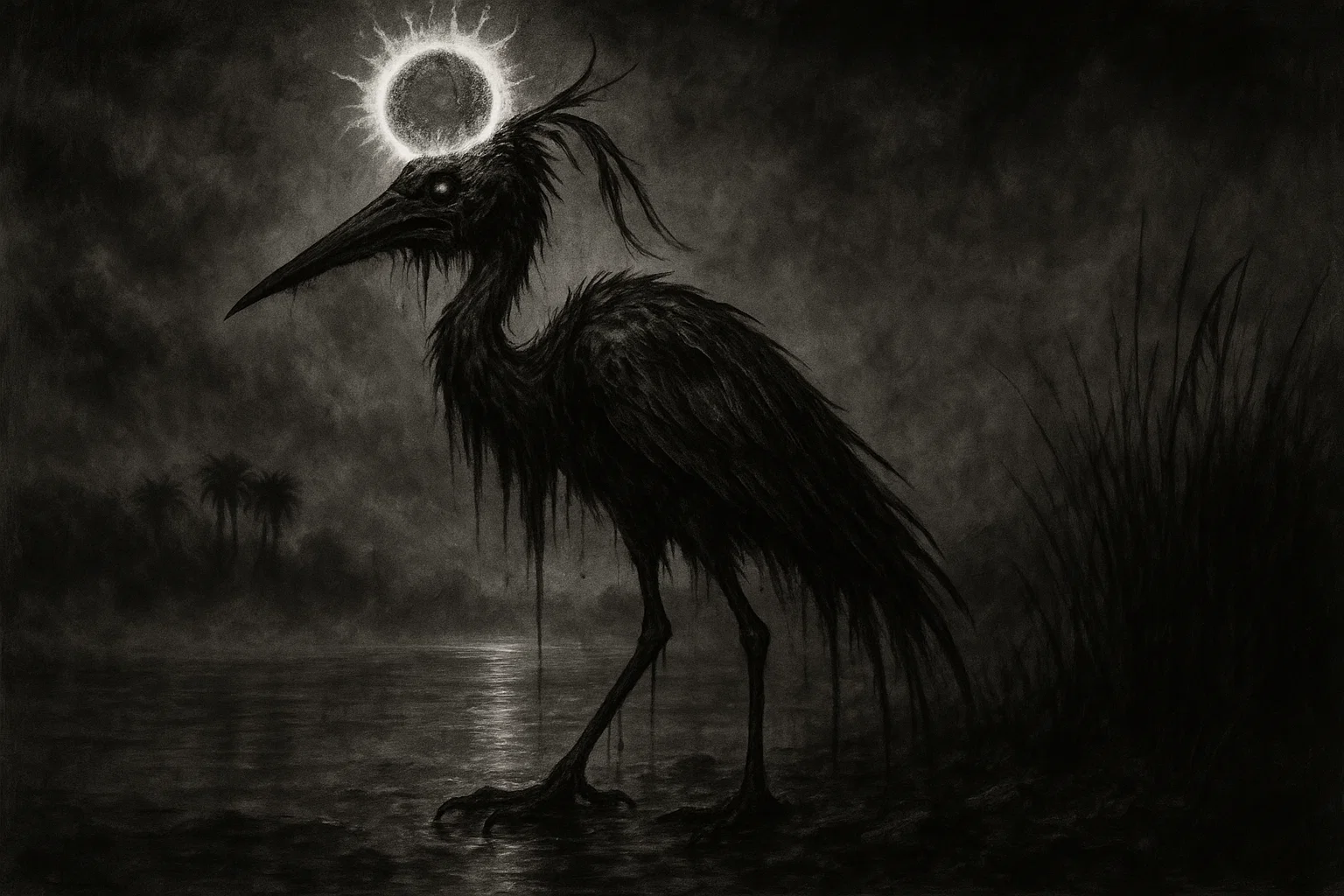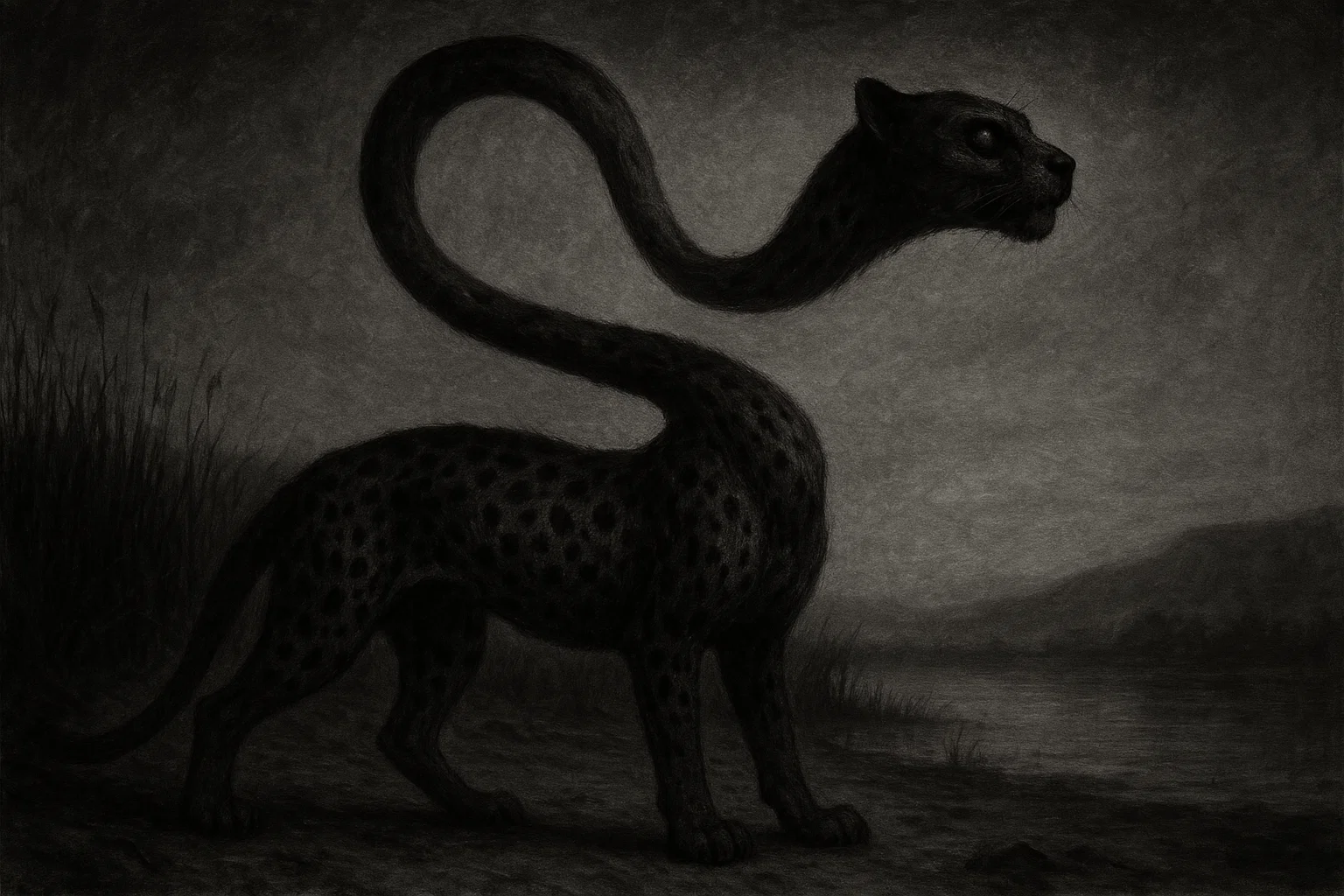Centaurs are a race of hybrid beings in Greek mythology, with a human upper body and a horse’s lower body. They inhabited the mountainous regions of Thessaly (particularly Mount Pelion) and were known for their wild and unruly behavior.
Most accounts portray them as savage creatures prone to violence, especially when influenced by wine, contrasting with the civilized order of human society.
The centaurs trace their origins to the union between Ixion, king of the Lapiths, and Nephele, a cloud nymph created by Zeus. This deceptive pairing led to the birth of Centaurus, who then mated with Magnesian mares to produce the centaur race.
Summary
Key Takeaways
| Attribute | Details |
|---|---|
| Names | Centaur, Kentauros, Ixionidae; from Greek κένταυρος (kéntauros), possibly meaning “piercing bull” or related to “bull-slayer” from ken- (pierce) and tauros (bull) |
| Nature | Supernatural hybrid race, classified as monstrous beings or nature spirits |
| Species | Humanoid |
| Appearance | Upper body of a man from head to waist, lower body and four legs of a horse; often depicted with shaggy hair, pointed ears, and muscular build |
| Area | Mountains and forests of Thessaly, Greece, including Mount Pelion and Magnesia |
| Creation | Born from Ixion’s union with Nephele (cloud nymph resembling Hera), or Centaurus mating with Magnesian mares; Chiron from Cronus and Philyra |
| Weaknesses | Susceptible to poisoned weapons, as in Hydra-tipped arrows; vulnerable to organized human forces like the Lapiths |
| First Known | Circa 1000 BCE, terracotta figurine from Lefkandi tomb; literary mention in Homer’s Iliad (8th century BCE) |
| Myth Origin | Greek folklore, possibly from encounters with horse-riding tribes or Indo-European horse cults |
| Strengths | Superhuman speed, archery skills, and brute force in combat |
| Associated Creatures | Lapiths (kin rivals), Satyrs (fellow Dionysian followers), Chiron (wise outlier) |
| Habitat | Caves and oak forests in mountainous regions |
| Diet | Wild game, fruits, and wine |
Who or What Is a Centaur?
Centaurs are a distinct group in Greek mythology, composite creatures blending human intellect with equine power. They live in the rugged terrains of northern Greece, embodying the untamed wilderness that borders human settlements.
Accounts describe them as a tribal race who hunt with rudimentary weapons—rocks and branches—often clashing with mortals over territory or revelry.
The race divides into two broad types: the savage majority, driven by base desires, and rare civilized individuals like Chiron. These beings frequent tales of heroism, serving as adversaries in battles that test the resolve of figures such as Heracles and Theseus. Their hybrid form highlights themes of duality, as rational thought contends with animal instincts.
Early texts (such as Homer’s Iliad) refer to them as “beast-men” inhabiting remote peaks, while later works expand on their societal role.
Centaurs participate in divine pursuits, drawing Dionysus’s chariot or guarding sacred sites, yet their reputation originates from episodes of disorder.
Why Do So Many Successful People Secretly Wear a Little Blue Eye?
Limited time offer: 28% OFF. For thousands of years, the Turkish Evil Eye has quietly guarded wearers from the unseen effects of jealousy and malice. This authentic blue glass amulet on a soft leather cord is the real thing – beautiful, powerful, and ready for you.
Genealogy
| Relation | Name | Description |
|---|---|---|
| Progenitor (Father) | Ixion | King of the Lapiths; punished by Zeus for lusting after Hera, leading to the creation of Nephele. |
| Progenitor (Mother) | Nephele | Cloud nymph fashioned by Zeus in Hera’s likeness; deceived Ixion, birthing Centaurus. |
| Ancestor | Centaurus | Deformed son of Ixion and Nephele; mated with Magnesian mares on Mount Pelion to spawn the centaur race. |
| Alternative Ancestor | Cronus | Titan father of Chiron; transformed into a horse to escape Rhea, uniting with Philyra. |
| Alternative Mother | Philyra | Nymph who bore Chiron; transformed into a linden tree upon seeing her hybrid offspring. |
| Notable Offspring | Chiron | Titan, father of Chiron; transformed into a horse to escape Rhea, uniting with Philyra. |
| Notable Offspring | Pholus | Civilized centaur, host to Heracles; killed by poisoned arrow during centaur skirmish. |
| Notable Offspring | Nessus | Savage centaur; attempted to abduct Deianira, slain by Heracles, later causing his death via poisoned blood. |
| Kin Group | Lapiths | Human tribe descended from Lapithes (brother of Centaurus); frequent rivals in centauromachy. |
Etymology
The term centaur derives from the Greek kentauros (κένταυρος), first attested in literature around the 8th century BCE. Scholars propose multiple origins for the word, reflecting the creature’s dual nature and cultural context.
One common interpretation links it to kentein (to pierce or stab) and tauros (bull), yielding “bull-stabber” or “piercing bull.” This etymology aligns with rationalizing accounts, such as Palaephatus’s On Incredible Tales, where centaurs represent mounted archers from Nephele village aiding Ixion against marauding bulls.
Ancient folk etymologies further connect kentauros to bovine imagery, possibly evoking the centaurs’ aggressive, herd-like behavior.
Pindar, in his Pythian Ode 2 (5th century BCE), provides an early poetic framing, describing their equine form without delving into nomenclature. The name’s evolution mirrors shifts in depiction: early art shows hybrid forms with human forelegs, suggesting initial associations with totemic horse cults rather than precise linguistic roots.
By the Classical period, kentauros had become standardized in texts—such as Apollodorus’s Bibliotheca (2nd century BCE)—emphasizing descent from Ixion.
The Roman adaptations (centaurus) retained the Greek form, appearing in Virgil’s Aeneid.
Regional variants, such as Cypriot bull-horned centaurs, hint at broader Indo-European influences, where horse-human motifs appear in Assyrian seals from the 13th century BCE. These precursors, depicting winged archers with scorpion tails, indicate possible Eastern borrowings into Mycenaean Greece.
The etymology also ties to Thessalian horse culture, where skilled riders may have inspired the myth. Diodorus Siculus (1st century BCE) notes centaurs as “bull-killers,” reinforcing the piercing motif.
You May Also Like: 15 True Ghost Stories You Shouldn’t Read Alone After Midnight
What Does a Centaur Look Like?
Centaurs appear as hybrids with a human torso, arms, and head seamlessly joined to a horse’s body at the waist. The upper half resembles a muscular man, often bearded and long-haired, with broad shoulders suited for wielding bows or clubs.
Early depictions (such as the 10th-century BCE Lefkandi terracotta) show variations like human forelegs ending in hooves or additional horse elements protruding from the back.
By the 7th century BCE, the form stabilized: four horse legs support the lower body, covered in short fur. At the same time, the human portion remains nude or minimally adorned.
Artistic renderings emphasize savagery through pointed ears, snub noses like satyrs’, and unkempt manes.
Female centaurs (or centaurides) appeared much later, around the 4th century BCE, in Macedonian mosaics, mirroring males but with softer features and flowing hair.
The famous centaur Chiron is depicted slightly differently, with human-like front legs in some vases to denote his civility and less body hair.
Mythology
Centaurs enter Greek lore as denizens of Thessaly’s wilds, symbolizing the frontier between civilization and chaos.
Their earliest literary mention occurs in Homer’s Iliad (8th century BCE), where they appear as “hairy beast-men” driven from Pelion by the Lapith hero Peirithous. This brief reference establishes them as formidable foes, inhabiting remote mountains and preying on travelers.
Archaeological evidence predates Homer: a terracotta centaur figurine from Lefkandi, dated circa 1000 BCE, marks the oldest known depiction, found in a hero’s tomb. This Geometric-period artifact features a hybrid with ambiguous forelegs, suggesting evolving iconography influenced by Mycenaean motifs.
Assyrian cylinder seals from the 13th century BCE feature similar horse-men, hinting at Eastern origins possibly transmitted via Hittite trade.
Pindar (5th century BCE) expands their genealogy in Pythian Ode 2, detailing Centaurus’s birth from Ixion and Nephele, and his mating with Pelion’s mares.
Hesiod’s Shield of Heracles (7th century BCE) vividly illustrates the centauromachy, depicting chaotic brawls with Lapiths amid wedding revels.
In the historical context, centaurs likely arose from encounters between non-equestrian Minoans and horse-riding Indo-European invaders around 2000 BCE. Thessalian tribes, famed for cavalry, propagated centaur descent myths to glorify their heritage.
By the Archaic period, they feature prominently in art: Attic black-figure vases (6th century BCE) portray them in processions or combats, often armed with fir branches.
Hellenistic texts like Apollodorus’s Bibliotheca compile variants, including Chiron’s separate lineage from Cronus and Philyra, elevating one centaur to mentor status. Ovid’s Metamorphoses (1st century CE) Romanizes them, associating centaurs with Dionysian excess.
Throughout, they embody barbarism, contrasting heroic order, and appear in temple friezes like the Parthenon metopes (5th century BCE), where centauromachies parallel Gigantomachies as cosmic struggles.
Ever Walk Into a Room and Instantly Feel Something Watching You?
Millions have used burning sage to force out unwanted energies and ghosts. This concentrated White Sage & Palo Santo spray does the same job in seconds – just a few spritzes instantly lifts stagnation, breaks attachments, and restores peace most people feel immediately.
Legends
The Deception of Ixion and the Birth of the Centaurs
Ixion was the king of the Lapiths in Thessaly. He committed a terrible crime by killing his father-in-law, Deioneus, by tricking him into a pit filled with burning coals.
Because of this act, no one was willing to forgive him or help him until Zeus, the king of the gods, took pity on him and invited him to Olympus, the home of the gods.
While there, Ixion fell in love with Hera, Zeus’s wife, and boasted about his feelings. To test Ixion’s intentions, Zeus created a cloud that looked exactly like Hera and named it Nephele.
He placed this cloud beside Ixion at a banquet, and Ixion, fooled by the disguise, embraced the cloud as if it were Hera. He later bragged to the gods that he had conquered Hera.
Angered by Ixion’s actions, Zeus punished him by tying him to a fiery wheel that spins forever in a place called Tartarus, a kind of underworld. From Ixion’s encounter with the cloud, a being named Centaurus was born, who was different and odd-looking.
Centaurus was cast out and ended up on Mount Pelion, where he mated with local horses. Their offspring were the centaurs, a unique race that combined features of both Centaurus and the horses.
You May Also Like: Minos: The Tyrant King of Crete and His Dark Mythological Legacy
The Centauromachy: Battle at Pirithous’s Wedding
Pirithous, the king of the Lapiths and son of Ixion, married Hippodamia, the daughter of Adrastus. To celebrate their wedding, he invited the centaurs, who were not only his friends but also part of his family. The feast was lively, filled with toasts and dancing. However, the centaurs, unfamiliar with wine, became quite drunk from the special wine meant for celebrations.
During the ceremony, Eurytion, a centaur leader, tried to seize the bride, Hippodamia, sparking chaos as other centaurs joined in, attempting to grab the women attending the wedding. Theseus, a hero and friend of Pirithous, quickly reacted by throwing a wine cup at Eurytion, which stunned him.
Seeing their women in danger, the Lapiths banded together to fight back. Peirithous struck the centaurs with wooden clubs, while Theseus tackled a centaur named Amycus and even gouged his eyes with a candelabrum. Another warrior, Caeneus, who had been transformed by Poseidon into an invulnerable man, took down several centaurs with his spear.
The centaurs fought back fiercely, grabbing anything they could find—like fallen branches and furniture—to use as weapons. They caused destruction and chaos, trampling guests and attacking them with broken items.
One brave Lapith warrior named Dryas swung a broadsword and fought valiantly. At the same time, Nestor, watching the battle from a distance, later shared the story of this fierce conflict.
The fighting spread into a nearby oak grove, where the centaurs used uprooted trees against their enemies. Some centaurs hurled heavy rocks at the Lapiths until Theseus struck them down with a club.
In the end, the Lapiths appeared victorious, driving the remaining centaurs away or defeating them entirely.
Heracles and the Centaurs on Mount Pholoe
In one of his adventures, Heracles had to capture the Erymanthian Boar. During this task, he stopped to visit a friendly centaur named Pholus, who lived in a cave on Mount Pholoe.
Unlike many of his wild kin, Pholus was kind and offered Heracles some roasted meat. He did hesitate, however, when it came to opening a special cask of wine meant only for centaurs, which had been given to them by Dionysus, the god of wine.
Despite Pholus’s reluctance, Heracles insisted on tasting the wine. Once he opened the cask, the delightful aroma filled the air and attracted a large group of centaurs led by Nessus. These centaurs, eager for the wine, rushed to the cave, brandishing torches and branches.
Pholus tried to keep them out by blocking the entrance, but Heracles stepped outside, armed with arrows dipped in the poisonous blood of the Hydra.
In the scuffle that followed, Heracles accidentally shot Chiron, another centaur, in the thigh. He also took down other centaurs, like Amphaeus and the sons of Autolycus. Some centaurs, including Nessus, ran away to the nearby Malian Gulf. Still, Heracles pursued them, defeating them even more with his club and arrows.
Tragically, as Pholus tried to see what had happened outside, he accidentally stepped on one of Heracles’s poisoned arrows, which quickly led to his death. Heracles was heartbroken and buried Pholus on the mountain.
Chiron, suffering from the poison that had entered his body, endured great pain until he chose to give up his immortality to free Prometheus, a figure punished by the gods.
You May Also Like: The Lernaean Hydra: Greek Myth’s Deadliest Creature
Nessus and the Death of Heracles
Nessus was a centaur with a red mane who made a living by charging travelers a fee to cross the Evenus River. One day, as Heracles and his wife Deianira were crossing the river, he entrusted her to Nessus while he made the crossing himself. During the trip, Nessus took advantage of the situation and tried to assault Deianira.
Heracles spotted this happening from the riverbank and quickly shot Nessus with an arrow dipped in the poison from the Hydra, which struck Nessus in the back.
As Nessus lay dying on the other side of the river, he deceived Deianira into believing that his blood was a love potion. He told her, “Take my blood… if another man shows interest in you, apply it to your clothing, and he will love only you.”
Deianira took some of his blood and later used it on a robe she gave to Heracles. However, the poison in the blood burned Heracles’s skin when he wore the robe. This ultimately led him to choose to end his life on a funeral pyre on Mount Oeta.
In the play Women of Trachis by Sophocles, it is revealed that while Nessus promised Deianira a love charm, he was secretly plotting Heracles’s destruction all along. Nessus’s betrayal was a form of revenge that came back to haunt them.
Centaur vs Other Monsters
| Monster Name | Origin | Key Traits | Weaknesses |
|---|---|---|---|
| Minotaur | Greek (Crete) | Bull-headed man; labyrinth dweller, cannibalistic strength | Labyrinth confinement, sword strikes (Theseus’s thread) |
| Satyr | Greek (Arcadia) | Goat-legged man; reveler, pipe-player, lustful | Overindulgence in wine, vulnerability to heroes’ weapons |
| Faun | Roman (Italy) | Goat-horned man; woodland spirit, prophetic, musical | Similar to satyrs; aversion to iron, easily distracted |
| Sphinx | Greek/Egyptian (Thebes) | Lion-bodied woman with wings; riddle-asker, strangler | Unsolved riddles lead to self-destruction; Oedipus’s intellect |
| Harpy | Greek (Strophades) | Bird-winged woman; storm-bringer, filth-scatterer | Trapped by heroes (Jason’s Argonauts), divine intervention |
| Siren | Greek (Aegean) | Bird- or fish-tailed woman; enchanting singer, ship-wrecker | Wax ear plugs, binding to mast (Odysseus’s crew) |
| Chimera | Greek (Lycia) | Lion-goat-serpent hybrid; fire-breathing, rampaging | Bellerophon’s spear with lead tip, Pegasus mount |
| Manticore | Persian/Greek | Lion-bodied man with scorpion tail; man-eating shooter | Heroic hunts, vulnerability to arrows |
| Echidna | Greek (Arima) | Half-woman half-snake; monster mother, cave-dweller | Immortal but slain by Argus (Hera’s guard) |
| Naga | Indian (Hindu) | Serpent-human hybrid; guardian, shape-shifter | Sacred bindings, heroic blades (like Vishnu’s) |
| Kinnara | Indian (Himalayas) | Horse-headed human; celestial musician, loving pair | Rarely antagonistic; mortal weapons if provoked |
Centaurs share hybrid forms with these monsters, blending human and animal elements to explore duality, but diverge in equine mobility versus predatory isolation.
Like the Minotaur and Chimera, they symbolize unchecked savagery, confined to wild fringes rather than mazes or lairs. Satyrs and Fauns parallel their Dionysian ties—wine-fueled chaos—yet lack centaurs’ martial prowess, favoring mischief over battle.
You May Also Like: Chimera: The Three-Headed Beast That Even Gods Feared
Powers and Abilities
Centaurs possess abilities rooted in their equine-human fusion, granting superior mobility and combat edge over mortals. Their horses’ lower body enables rapid charges across terrain, ideal for ambushes in forested mountains.
Archery prowess, possibly inherited from nomadic origins, enables precise strikes at a distance. At the same time, immense strength facilitates the use of improvised weapons, such as tree trunks.
In myths, they demonstrate endurance in prolonged battles, shrugging off initial wounds until they are overwhelmed by poisoned arrows. Exceptions like Chiron extend to intellectual gifts—prophecy, medicine, and mentorship—drawing on Apollo’s tutelage.
Their powers and abilities include:
- Speed and Charge: Gallop at high velocities, delivering devastating horn-like impacts or tramples in combat.
- Archery Mastery: Expert bowmen, firing arrows with lethal accuracy from a horseback-equivalent stance.
- Superhuman Strength: Upper body power combined with equine musculature for lifting boulders or uprooting trees as weapons.
- Tracking and Survival: Keen senses for hunting game in wild habitats, navigating rugged landscapes instinctively.
- Prophecy (Rare): Select individuals like Chiron foresee events, advising heroes on quests.
- Healing Knowledge (Rare): Chiron’s expertise in herbs and surgery, teaching figures like Asclepius.
- Endurance: Withstand prolonged fights and recover from non-fatal injuries through natural vigor.
Can You Defeat a Centaur?
Defeating a centaur, a creature that’s half human and half horse, requires some clever strategies. Since they often rely on their numbers and the terrain around them, it’s important to find ways to use that against them, while also countering their strong points as horses.
In close combat, centaurs struggle in tight spaces where they can’t charge effectively, making them vulnerable to attacks at their joints or eyes.
Using ranged weapons, like arrows, can disrupt their archery skills, and fire can prevent surprise attacks in the woods. In one-on-one fights, as seen with Nessus, a quick shot with an arrow or spear to the body can stop them in their tracks.
While some centaurs, like Chiron, are more civilized and open to negotiation or using their wits, the more wild centaurs respond only to strong force.
Conclusion
Centaurs are fascinating creatures from Greek mythology, often seen as symbols of the struggle between thought and natural instincts. They are half human and half horse, representing the conflict between our rational minds and our more instinctual behaviors.
Their stories, like the one about Ixion, show how even the gods’ actions can create powerful beings that challenge heroes to maintain order in the world.









